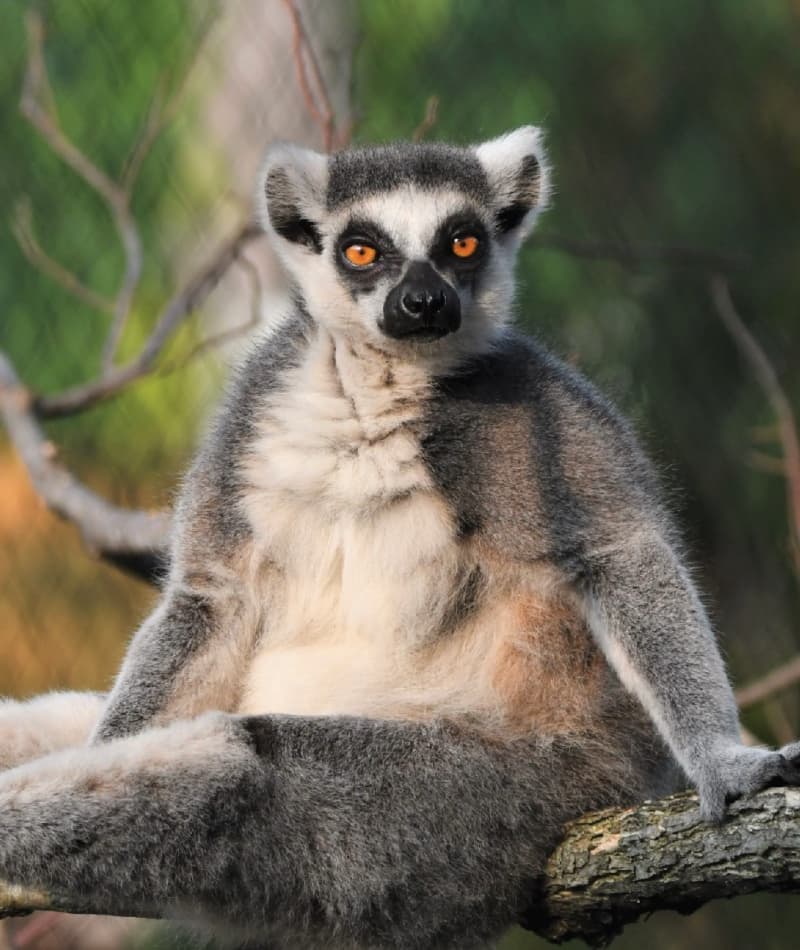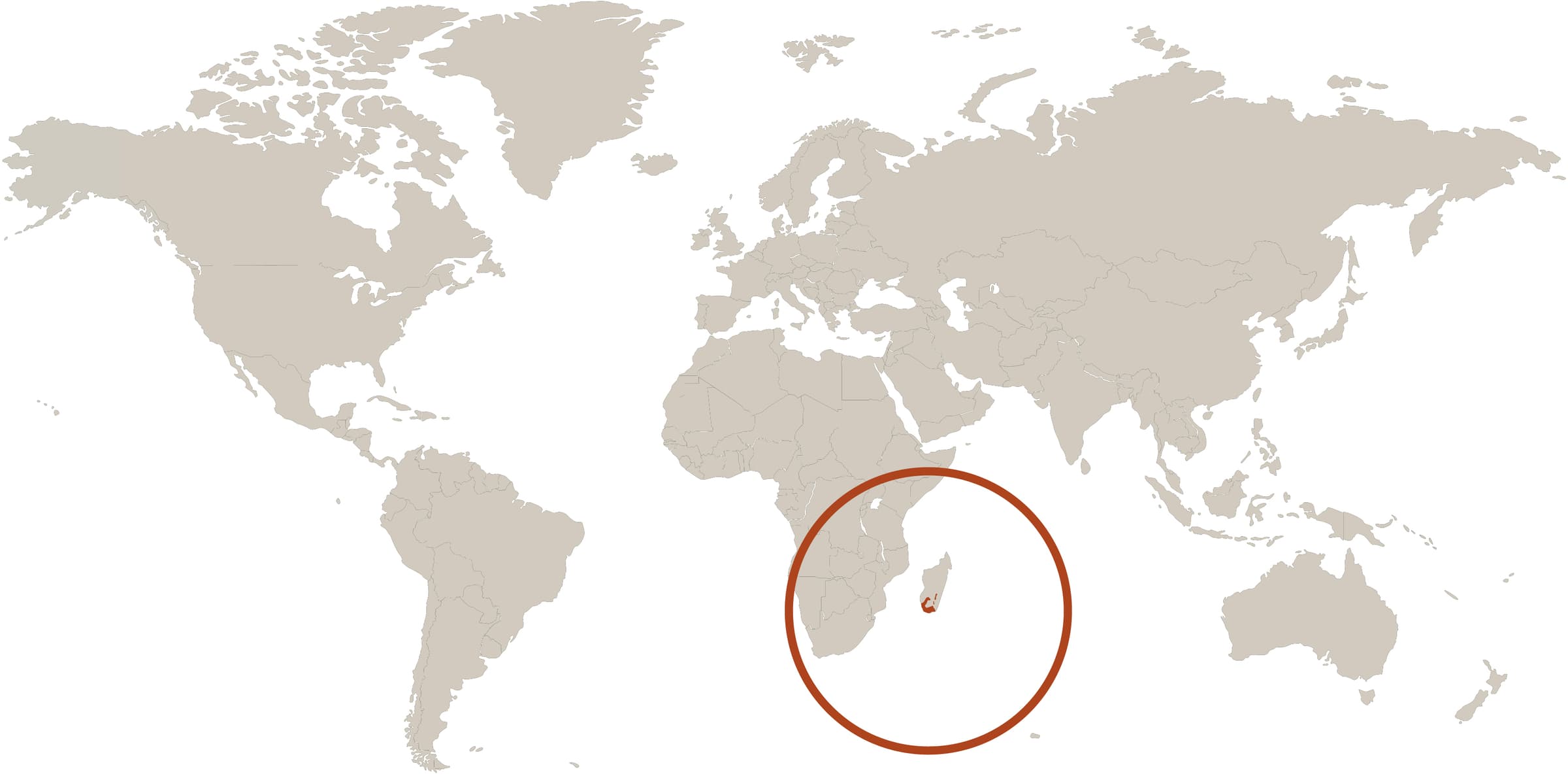
Ring-tailed Lemur
Lemur catta
Did you know?
- Ring-tailed lemurs are a part of the Lemuridae family, which they share with other true lemurs.
- They live in forest, desert, and scrubland in south and southwestern Madagascar.
- They are the most terrestrial of all the lemurs.
- A male will rub its tail over scent glands on its arms and then wave it at their opponent. This is called skink-fighting.
- A female will have one to two babies at a time.
Adaptations
Ring-tailed lemurs have a range of communication abilities, including vocalizations, facial expressions, and scent marking. They are some of the most vocal primates. They will use a variety of purrs, meows, howls, and grunts to share information. Each ring-tailed lemur has 13 bands on its tail; the bands alternate between black and white. They use their tails to communicate: one example can be seen when they travel. As they move, they keep their tails in the air, almost like flags, to help keep the group together.
Young and Family
Ring-tailed lemurs live in large social groups, which typically have up to 30 members. Like most lemur species, females are dominant to males. Mothers give birth once a year and twins are not uncommon. Female offspring stay in their birth group; males leave when they are three to five years old. All adult females will help raise the young lemurs in their family group.
Threat Level
- Unknown
- Common
- Near Threatened
- Threatened
- Endangered
- Critically Endangered
- Extinct in the Wild
Endangered
The Ring-tailed Lemur faces a very high risk of extinction in the wild.
Range
Southwestern Madagascar
Habitat
Forests, scrublands, deserts

We care about ring-tailed lemurs
The Saint Louis Zoo participates in the Species Survival Plan for ring-tailed lemurs, a cooperative breeding program that helps ensure a healthy population of animals, and we support them in Primate Canopy Trails and the Primate House at the Zoo.
Through the Saint Louis Zoo WildCare Institute Center for Conservation in Madagascar, we help the Madagascar Fauna and Flora Group conserve Madagascar's endangered species. Learn more about how we are helping lemurs in the wild.
Find this animal in Historic Hill

SAINT LOUIS ZOO ZONE
Historic Hill
Historic Hill is a lovely stroll through one of the oldest parts of the Saint Louis Zoo. From the 1904 World’s Fair Flight Cage to the Spanish architectural flavor of the 1920s in the Bird House, Primate House and Herpetarium to the finishing touches of our thoroughly modern exhibits, this area of the Zoo has a unique ambiance and a nostalgic history that make it a great destination.

